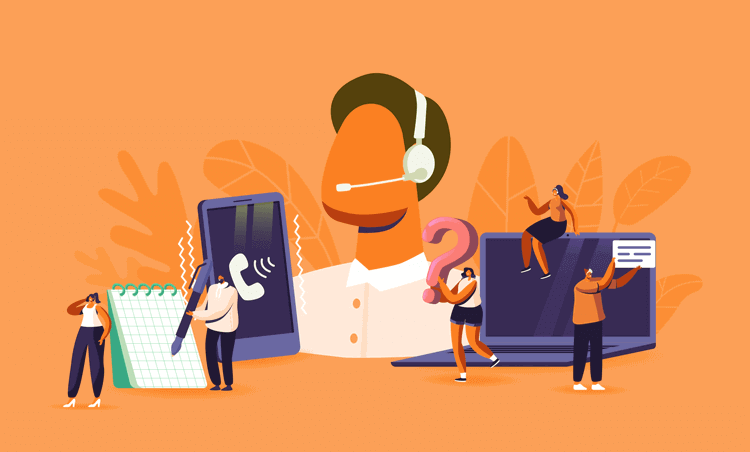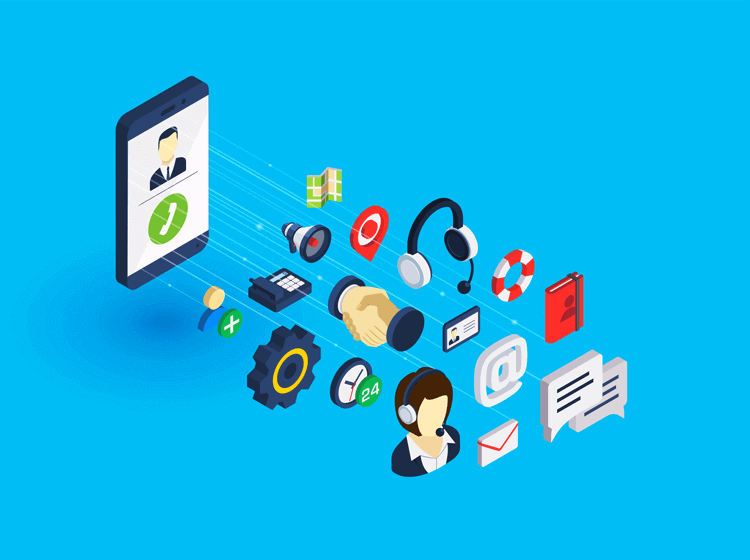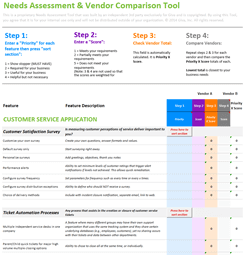12 Top Techniques for Customer Service Problem Solving
In the dynamic landscape of customer interactions, effective customer service problem solving is more than beneficial — it's a necessity. It's about recognizing that every conversation is an opportunity to transform a challenge into a solution. This approach leads to an enhanced customer experience, where every interaction is valued.
Along with the do's, we'll highlight some critical don'ts to avoid. Whether you're new to the industry or a seasoned professional, this blog post is dedicated to uncovering effective strategies and techniques that will elevate your customer service problem solving skills to the next level.

Understanding Customer Service Problem Solving: The Essentials
The essence of problem solving in customer service lies in effectively identifying, understanding, and addressing the challenges faced by the customer. This skill set goes beyond issue resolution; it encompasses empathy and practical knowledge to develop solutions that elevate the experience with your brand. On a general level, this can be achieved through active listening and ensuring that service representatives grasp each customer's unique situation. Most customers do not want robotic replies, especially when they are being told "no." They want tailored replies and solutions to their issues.
Why is problem solving in customer service so important? It stands as the cornerstone of building customer retention and trust. When issues are resolved with care and efficiency, it reinforces confidence in your brand. It also solidifies a strong, positive brand reputation. This proactive approach in addressing customer needs helps foster long-term relationships. Further, it ensures a lasting impact on your business's image and customer loyalty.
12 Key Customer Service Problem Solving Do's and Don'ts
Do's
-
Do Regularly Train and Update Your Team's Skills
Why It's Important: Customer service training plays a vital role in keeping your team equipped to handle a wide array of customer issues effectively.
Example: Implement regular training sessions that cover new customer service tools, communication techniques, and updates about products or services. This could involve workshops on handling difficult conversations or training on new software features.
Best Practice: Schedule ongoing training and development programs. Encourage continuous learning by providing resources like webinars, workshops, and access to relevant industry content.
-
Do Celebrate and Share Positive Feedback
Why It's Important: Sharing positive customer experiences can motivate your team and demonstrate the value of excellent customer service.
Example: When a customer compliments a team member or expresses satisfaction with a resolution, share this feedback with the team. This not only boosts morale but also sets a standard for the quality of service.
Best Practice: Create a system for collecting and sharing positive customer feedback to highlight success stories and best practices. This can be done both internally within the team and externally on social media or marketing materials. You may also consider incentivizing positive feedback. For example, if an employee receives 20+ 5 star reviews via the customer feedback survey, they receive a $25 Starbucks gift card.
-
Do Utilize Technology to Enhance Efficiency
Why It's Important: Leveraging the right technology can significantly streamline service processes, leading to quicker problem resolution and more proactive customer support.
Example: Implementing a customer service ticketing system can help track and manage customer queries more efficiently, ensuring no issue is overlooked. Also, implementing chatbots on your website can create an added level of convenience for your customers.
Best Practice: Research and invest in customer service tools that suit your business needs. This might include CRM systems, chatbots, or advanced ticketing systems.
Read More: What is AI Ticketing and 10 of Its Benefits to Customer Support Businesses
-
Do Create Personalized Customer Engagement
Why It's Important: Personalized customer interactions based on the customer's history and preferences demonstrate a deep understanding of their needs.
Example: Use data from previous interactions to tailor your approach. An example is referencing a customer's past purchases or support issues when offering assistance. This shows the customer that they are valued and remembered.
As you go down this path, you can begin to segment your client base into specific customer types. Some examples might be the "tech-savvy," "senior citizen," and "business-owner." You can approach each of these customer types with a different style, and can even consider personalized email messaging.
Best Practice: Train your team to use customer data effectively to personalize each interaction. Utilizing CRM systems can help in storing and retrieving relevant customer information to make each interaction more personal and meaningful.
-
Do Offer Multi-Channel Support
Why It's Important: Providing multichannel customer support meets customers where they are most comfortable. This can be whether it's via phone, email, social media, or live chat.
Example: A customer prefers to communicate via social media messaging for quick queries but uses email for more detailed discussions. Offering both channels caters to their preferences.
Best Practice: Implement a strategy that integrates various communication channels seamlessly. This can help provide consistent and effective customer support across all platforms. Most employees can be cross-trained on all these platforms, which is something the organization should strive for.
-
Do Understand and Adapt to Generational Differences
Why It's Important: Effective communication strategies are key to tailoring your approach to meet the varying needs of each generation.
Example: While a baby boomer might prefer a detailed phone conversation with plenty of confirmation throughout, a millennial might favor a quick chat message.
Best Practice: Train your team to recognize and adapt to the differing needs of each generation. Coming up with a "cheat sheet" of things to keep in mind for each age bucket can be a great resource for employees.
Read More: Customer Service Excellence Across All Generations
Don'ts
-
Don't Make Assumptions About the Customer's Issue
Why Not: Jumping to conclusions without fully understanding the customer's problem can lead to miscommunication and potentially worsen the situation. It's crucial to approach each issue with an open mind.
Example: If a customer is unhappy with a product, avoid assuming it's due to user error. It could be a misunderstanding about the product's features or an actual defect. Assuming user error can infuriate a customer as they consider you are blaming them directly for the issue they are having.
Better Approach: Always ask clarifying questions and listen carefully to the customer's explanation. This ensures that you fully understand the problem before offering a solution. An example might be if you offer computer security software that requires user set-up. You, as the employee, should be knowledgeable about the process already. Ask the customer to explain the steps they took during installation to see if they have missed one or done things out of order.
-
Don't Neglect the Emotional Aspect
Why Not: Focusing solely on the technical side of a problem-solving process and ignoring the emotional intelligence in service can make them feel undervalued and frustrated. Focusing on emotional intelligence gives a more comprehensive understanding of the customer's feelings.
Example: If a customer is upset about a delayed shipment, simply explaining the logistics process without acknowledging their frustration can leave them feeling unheard. They want to know that you understand where they are coming from.
Better Approach: Empathize with the customer's emotional state. A simple acknowledgment like "I understand how frustrating this must be" can go a long way in calming an upset customer and building rapport. Using the logistics example, put yourself in the customer's shoes. They may be waiting for an important package, perhaps a medical device, or a birthday gift for a loved one. Each situation should be treated as if the package contains something of timely importance, not just any materialistic good.
-
Don't Overlook the Importance of Follow-Up
Why Not: Failing to follow up can leave customers feeling neglected and can lead to unresolved issues resurfacing.
Example: After resolving a customer's issue, not checking back to confirm their satisfaction can lead to missed opportunities for feedback and improvement. For example, let us say that you work for a telecommunications company. You visit a client to resolve an issue with a cable tv box that seems to turn off at random intervals of use. You have not heard from the customer in a week. Even though it is safe to assume that all is well, it is still a nice gesture to check in with the customer to ensure everything is working well. They will appreciate that and likely remember you for outstanding service.
Better Approach: Implement a system to routinely follow up with customers after their issues have been addressed. This will help increase satisfaction and provide valuable feedback. This can be done via an email survey, phone call, or even personal visits, depending on the type of business.
-
Don't Underestimate the Power of a Knowledge Base
Why Not: A well-maintained knowledge base is a vital tool for efficient problem solving. Neglecting it can lead to inconsistent or outdated information being provided to customers.
Example: Customer service representatives relying on an outdated knowledge base might provide incorrect information. This can lead to further customer frustration. For example, a customer may be calling you back about an issue regarding a malfunctioning cable TV box. If you do not have a record of the initial call notes, or have notes about a similar issue from two years ago, this is cause for confusion and frustration.
Better Approach: Regularly update and maintain your knowledge base. This ensures that your team has access to accurate and current information, which is important for effective problem-solving. Investing in good cloud-based knowledge base software is a prudent step.
Read More: Everything You Need to Know About Customer Service Knowledge Base Software
-
Don't Dismiss Customer Feedback
Why Not: Ignoring customer feedback can lead to repeated mistakes and missed opportunities. Customer feedback analysis is essential for continuous improvement and innovation.
Example: Not taking customer complaints seriously or considering them for future changes can result in a loss of trust and customer loyalty. For example, let us imagine that you manage the mens clothing design at a noteworthy athletic brand. You change the design of a pair of popular pants and start to receive negative feedback about the fit on post-purchase surveys. If you take no action, customers could boycott your brand.
Better Approach: While it is one thing to actively encourage customer feedback, it is another to action this feedback into a tangible result. Use received feedback to inform service improvements for customers and training programs for employees.
-
Don't Rely Solely on Scripted Responses
Why Not: Over-reliance on scripted responses can make customer interactions feel impersonal and ineffective, especially in complex problems.
Example: Using a standard script for a unique problem can frustrate customers who seek a more personalized approach. For example, imagine you are a customer looking for a refund on a product you did not receive, even though the company claims to have shipped it. If the company replies using a generic response such as, "while we are sorry your item did not arrive, we completed our end of the agreement by sending it out. Please follow-up with the shipping company." While this is technically correct, customers do not want to be passed from company to company to get their answer. In this case, it might be more valuable for the seller to contact the shipping company on the customer's behalf and open up an investigation. Going the extra mile saves the customer added time and frustration. It might also score you, as the seller, some extra points and loyalty.
Better Approach: Train staff to use scripts as guidelines rather than strict rules. Encourage them to personalize interactions based on the specific context and customer needs.
Read More: Seamless Customer Experience: Top 10 Strategies for Better Service Delivery
The Bottom Line: Mastering Customer Problem Solving
Effective customer problem solving is essential in the dynamic world of customer service, turning every interaction into an opportunity for positive change. As highlighted earlier, addressing and solving customers' problems is not just about quick fixes but about creating lasting relationships. This involves actively listening, empathizing, and using tailored strategies to meet individual customer needs. This approach not only resolves immediate concerns but also sets a high standard for customer service, contributing to the long-term success of any business.
To elevate your team's game, explore Giva's innovative Customer Service Software. With features like a customizable dashboard, robust reporting analytics, and quick setup, Giva is designed to streamline your customer service process. Experience Giva's impact on your customer service delivery by trying it free for 30 days.





